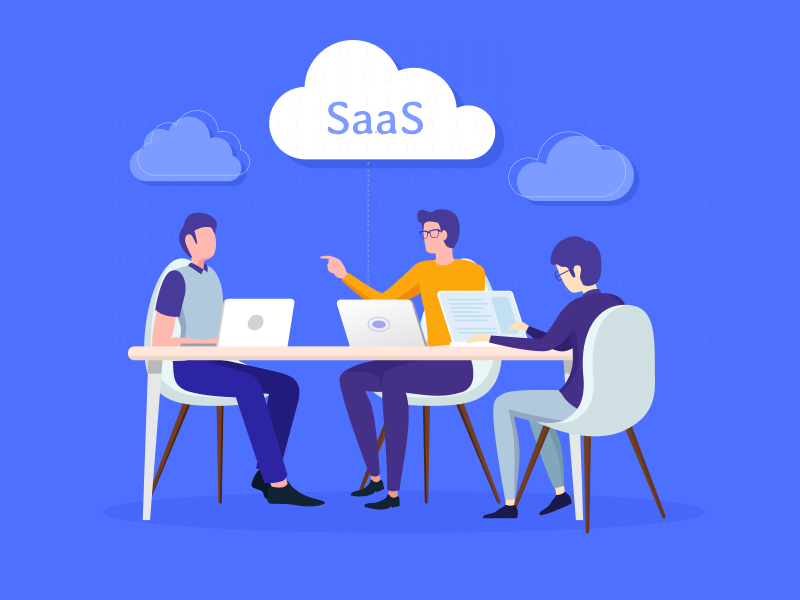The SaaS industry has steadily grown over the years, and now SaaS solutions have almost become essential for most businesses. To conclude a profitable Saas contract, it is necessary to negotiate appropriately.
If you’ve not once had to do it before, negotiating a SaaS contract may look daunting from afar, but it isn’t that different from regular contracts if you know what to look out for.
Most businesses get better at it from several trials and failures, but you don’t have to struggle through the same process. This article highlights the ten core things experienced businesses consider when negotiating a SaaS agreement.
But first, what is a SaaS agreement?
What is a SaaS Agreement?
A SaaS agreement or contract outlines the terms and conditions of an agreement between a Salas vendor and the business needing their services.
All details are discussed during SaaS contract negotiation. This agreement covers every part of the agreement between the two parties, including fees, access to the software, subscriptions, data management, etc.
It’s important to have a clearly outlined and properly negotiated SaaS agreement because you might need to refer to it in the future. At the end of 2022, 80% of all businesses used at least one SaaS solution.
These numbers are set to grow even higher by 2027. This means that you’ll have to negotiate a SaaS agreement for your business at some point.
Like every other contract, both parties should negotiate the terms and conditions of the SaaS agreement until they are happy. Here are ten points to consider during negotiation.
10 Things To Consider When Negotiating a SaaS Contract
Price and Discounts
You must be vigilant when negotiating the price for SaaS software. Some SaaS vendors will start offering a heavy discount to get your patronage. Be sure to differentiate this from the actual fee.
There are different ways SaaS pricing can be calculated.
It could be by the number of users, by services used, or based on packages and the perks that come with them. Some vendors may also have a flat fee.
Know the pros and cons of these pricing metrics and find one that works best for you. You can always negotiate better pricing if the vendor works with a different pricing metric.
Take note of discounts, how much they are and how long they last. Depending on your business size, you can negotiate for an overall discount on the total price.
2. Terms and Conditions
While you’ll be negotiating for more services and a lower price, your SaaS vendor will likely go for a long-term contract to help them with revenue forecasting.
The terms usually last anywhere from a few months to five years, and vendors will likely push for the most extended contracts.
If you’re faced with this, it’s advisable to go with the shortest long-term contract option. It could be six months, one year or two years.
If you end up with a long-term contract, be sure to put a cancel clause to the contract, so you’re not stuck with subpar services for a long time.
3. Renewal Plan
When your first subscription period ends, you have two options – end the contract, or renew. If the services are great and you plan to renew, now’s a good time to renegotiate some of the terms from the first agreement.
But first, check your previous contract to see if your renewal is ‘evergreen’, which means renewal will be automatic.
This second-tier negotiation should address all the concerns you may have after using the SaaS software. Include any questions you might have about customer data after the subscription ended.
If you plan correctly, you might negotiate lesser pay and more services.
4. Additional Costs
The original pricing isn’t the end. There are always additional costs, so look for them and negotiate.
Some items that’ll fall under additional costs are unnecessary, while the necessary ones could be renegotiated. You could incur extra costs through:
- Extra Users
- Training
- Integrations
- Customizations
- Third-party services
If you have an international team, find out if there are additional costs for having users in specific locations. If you plan to hire before the end of the contract, find out if there is an additional cost and what it is.
Have all extra costs clearly outlined so you can design a realistic budget.
5. Service Level Agreement (SLA)
A SaaS service level agreement outlines what services your business will be getting from the SaaS vendor. This agreement serves as a legal document and comes together with the contract.
The SLA comes in handy when negotiating the terms for a cancellation clause.
The SaaS vendors not meeting up with the services outlined in the SLA can be one of the grounds for terminating your contract without having to pay a fine.
If you’re unsure what should be in an SLA, reach out to a professional to look through it.
6. Software Security
Data is a huge issue when using SaaS vendors, primarily because of data protection and ownership.
Some SaaS vendors keep ownership of the data unless the buyer renegotiates it in the SaaS agreement.
Your organization is better off holding client data ownership to avoid migration problems. Also, ensure that no data from your business should be shared with third parties or stored in the cloud.
7. Technical Specifications
Technical specifications are often overlooked when negotiating SaaS agreements, and it’s a shame because they can affect other parts of the contract, like pricing.
The specs of the software include functionality, customization, and license scope.
These specs measure the utility of the software and the extent to which the buyer can use it. Depending on what rights the buyer has, the pricing for their subscription might vary.
Ideally, it would be best to negotiate your specs before pricing, so you have a definitive figure that isn’t likely to change.
8. Software Backup and Support
Backups on the cloud are standard procedure, but they may not be as frequent as you need them.
This is a point for negotiation.
Reach out to the SaaS vendor, outlining your needs. The vendor might require an additional fee for a more frequent backup.
Hence, it’s best to negotiate this before pricing and additional fees.
Also, software support is equally important.
Having reps on standby to attend to any issues and answer your questions on time is great. Ensure that software support is highlighted in your contract and SLA.
9. Set and Discuss Non-negotiable
When using a software service, buyers have expectations that fall under two categories – negotiable and non-negotiable.
The negotiable, like pricing, can be flexible, but the non-negotiable are fixed. If the SaaS vendor can’t meet those requirements, the buyer won’t be signing a contract with them.
Before drawing up any contract, decide your non-negotiable and discuss them with the SaaS vendors.
Doing this will save you time in back and forths with vendors that can’t meet your business’s needs.
10. Software Scalability
Businesses are dynamic, and they scale accordingly.
Should your team expand or reduce, will the vendor be willing to scale your software needs?
Address this while negotiating the contract. You should be able to upgrade or downgrade when you need to.
Conclusion
Every contract, including your SaaS agreement, can be negotiated until all parties are comfortable. Many new businesses end up paying so much money and not getting favorable terms and conditions when negotiating a SaaS contract.
With a good negotiation, you can end up with lower fees and better services. If you need any support, reach out to a professional for help, but with this checklist, you can outline what you want.


